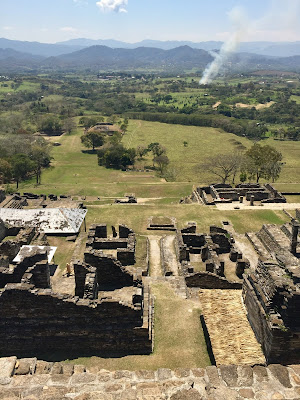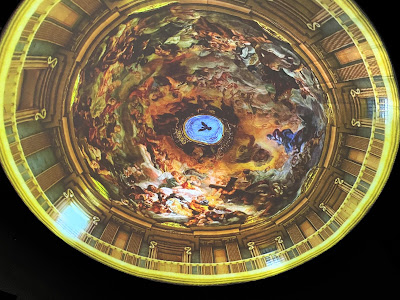Join me next February for an adventure to Chiapas,
The Magic of the Maya World
I have led tours to a glorious old, old part of Mexico in the southern state of Chiapas. We experienced its ancient Maya monuments and temples, visited with its warm and friendly people and saw firsthand the incredible work these artisans create. They were such a memorable trips. One lady friend, who has been on all of my Mexico tours, sent me the nicest note in which she wrote, "I can't thank you enough for planning the 'Grande Adventure' trip to Chiapas. I can't think of anything I would have changed. It was one of the best so far!" I had hired a wonderful driver with a spacious Sprinter van and a very knowledgeable historian who was our guide the entire trip. I could not have had a better crew.
They were such great trips and so different than my other Mexican tours, that I have decided to lead another tour to Chiapas. The Magic of the Maya World journey is set for February 16 - 24, 2023. Below are just some of the highlights of the upcoming trip!
The first night will be spent at a quaint hotel right in Chiapa de Corzo. (See my post dated April 20, 2017 to read about the town's square and history)
The next morning we will visit the pristine plaza before heading down the river
where we will visit one of Chiapa's most important natural wonders when we take a boat trip up the Grijalva River. The river winds through the Canon de Sumidero whose limestone walls reach a kilometer high in some places. A haven for all kinds of birds and Spider monkeys. (See my post dated June 28, 2016 on more photos of the Canon)
We'll spend three nights in San Cristobal de Las Casas in a lovely hotel right in the historic center. San Cristobal de Las Casas was founded in 1528 and is full of historic churches, museums and old architecture. There is a large artisan market right next to the Santo Domingo church.
Chiapas is known for its textiles: huipiles, rebozas, blankets, purses, table runners... You will find creative pottery from Amantenanga del Valle. The area is famous for its amber.
Calle de Guadalupe in the historic center of San Cristobal de Las Casas is one of the pedestrian streets, lined with quaint restaurants, galleries and shops.

A side trip from San Cristobal de Las Casas will take us north to San Juan Chamula in the Highlands. One of the most interesting churches with an interior that is like no other in Mexico. (See my post dated April 28, 2016)
I have specifically planned the itinerary on these dates so we will be in San Juan Chamula during Carnival. Carnival is an official Mexican holiday that kicks off a five-day celebration before the Catholic Lent begins on Ash Wednesday. Beginning the weekend before Lent, Carnival is celebrated exuberantly with parades, costumes, music and dancing in the streets.
It is an exciting time during Carnival and something one should not miss.
A visit to the colorful Sunday market in the Highland's village of Zinacantan.
The church in Zinacantan was beautifully decorated with flowers grown nearby (a big industry in this area).
Each Chiapas highland village has their own unique attire, hand-woven that is embellished with a cross-stich or embroidery. The embroidered shawls worn by the women in Zinacantan were just exquisite. (See my post dated February 26, 2016 for more photos and information about Zinacantan).
As we leave San Cristobal de Las Casas, we will travel through gorgeous countryside on the way to the jungle setting of Palenque.
The Palenque ruins are the crown jewel of the archaeological sites not only in Chiapas but in the entire Maya empire.
There is a sense of sophistication about Palenque. (For more information on Palenque, check out my post on my Blog: August 28, 2017, March 21, 2017 and March 31, 2017).
After touring the ruins, we will visit the fabulous museum where you will see many pieces that are almost perfectly preserved.
Part of the fun getting to the ruins of Yaxchilan is the smooth, the 45-minute boat ride down the Usumacinta River which divides Mexico and Guatemala. The scenery is magnificent and you may spot a Howler monkey up in a riverside tree.
Yaxchilan, an ancient city overlooking the Osumacinta River, has a magical feel to it. The setting was just enchanting, as were the ruins.











































